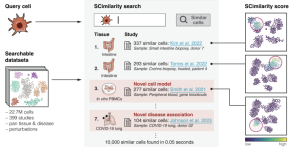Obesity Villains, Continued | Childhood Obesity News

This blog has been taking a second or third look at various phenomena that have been deemed responsible for, or at least conducive to, childhood obesity. Most recently, it looked at sleep debt which, blame-wise, proves to be a very elusive target.
Today’s post checks out the remaining causes that were examined in the 2009 paper, “Ten putative contributors to the obesity epidemic,” to see how they have held up over time.
Endocrine disrupters
The targets of blame in this area are chemicals whose presence in the natural environment has increased alarmingly. Of particular concern is their effect on the embryos of mammals, including humans — although exposure is in no way beneficial to adults, either. According to the paper,
PBDE, BPA, and other EDCs exposure have been implicated as contributing to obesity in both humans and model animals, possibly by interfering with estrogen and androgen signaling… [T]he human population is widely exposed to BPA and it appears to accumulate in the fetus.
[D]isruption of the activity of estrogen and testosterone signaling by EDCs during fetal development can lead to permanent changes in reproductive organ development, which can later in life impair homeostatic systems, such as the regulation of body fat and weight.
The chemicals suspected of endocrine disruption come at us from every direction. Anyone who enjoys guilt-tripping themselves or others can ponder the personal and societal effects of consumer products, incineration, atmospheric transport, agricultural runoff, harbor contamination, industrial and municipal effluents, and pulp mills in the ever-increasing plasticization of the environment and of our very own innards.
Proving the connection in a lab is tricky, because not much is known about endocrine disruptors’ hormonal activity, and that is the problem. Some aspects are more obvious and easier to catch on to, like the effect of estrogen on white adipose tissue. Fortunately for the scientists who track this sort of thing, much evidence is easily captured, for instance, BPA that is detectable in the urine of 95% of Americans.
Pharmaceutical iatrogenesis and obesity
Many of the most widely used types of pharmaceuticals have been observed to cause a concerning amount of weight gain — including antidiabetics, antihistamines, antihypertensives, steroid hormones, contraceptives, protease inhibitors, and psychotropics. The risks extend to the damage done by poor patient compliance when the obesogenic effects show up and patients decide, “No thanks, I’d rather risk high blood pressure and mental imbalance than be fat.”
Ambient temperature and obesity
Who would have thought that a difference of one and one-half degrees could cause a significant life-altering difference? But for week-old infants, it was found that despite identical feeding, the weight of babies in 36.5-degree incubators was greater than the weight of babies in 35-degree incubators. Here is another unsettling discovery:
[W]eight gain during the first four months of life is positively correlated with childhood overweight status, and weight gain during this period is greater for infants born in the spring (and presumably reared in warmer ambient temperatures) than infants born in the fall…
In their summary and departing remarks, the authors of this paper stated their desire to see scientists “remain skeptical of simplistic conclusions about complex phenomena which public health advocates in the obesity field, in particular, seem prone to accept as complete and adequate explanations.” Why? Because…
[A]ny one explanatory theory must be viewed in the context of the constellation of plausible, interrelated, and in many cases still unproven hypotheses.
Your responses and feedback are welcome!
Source: “Ten putative contributors to the obesity epidemic,” November 2009
Image by Towfiqu barbhuiya on Unsplash







